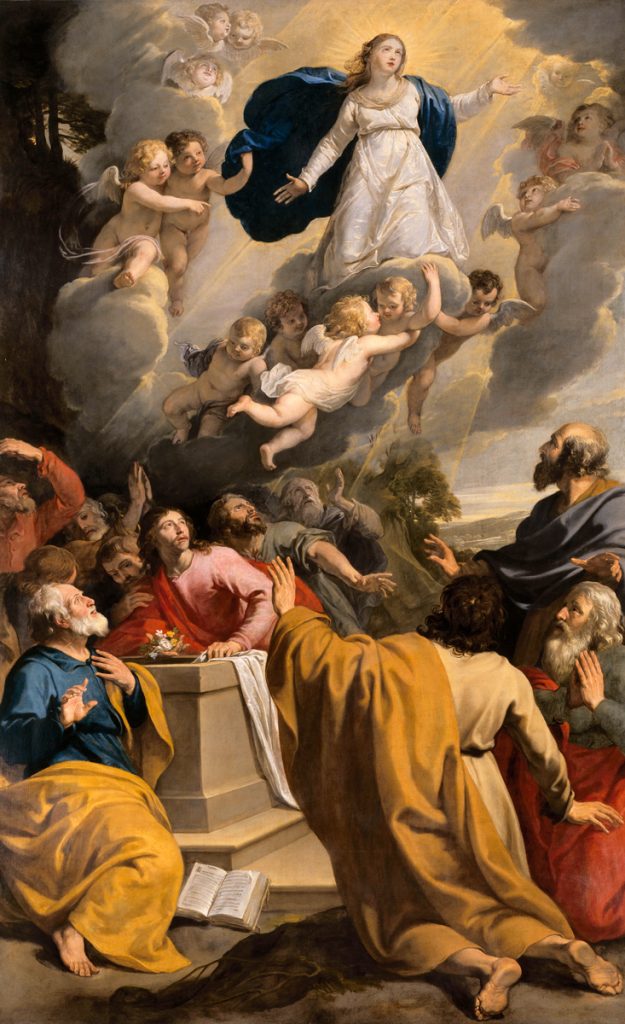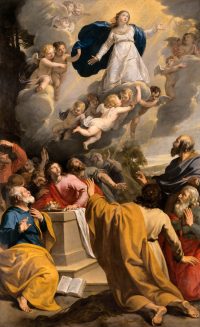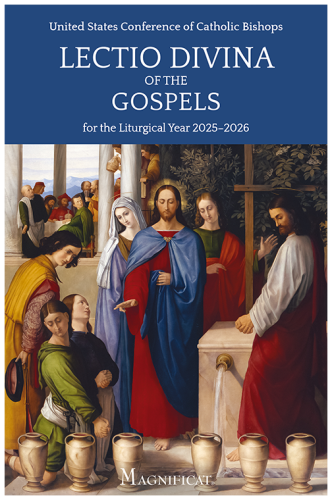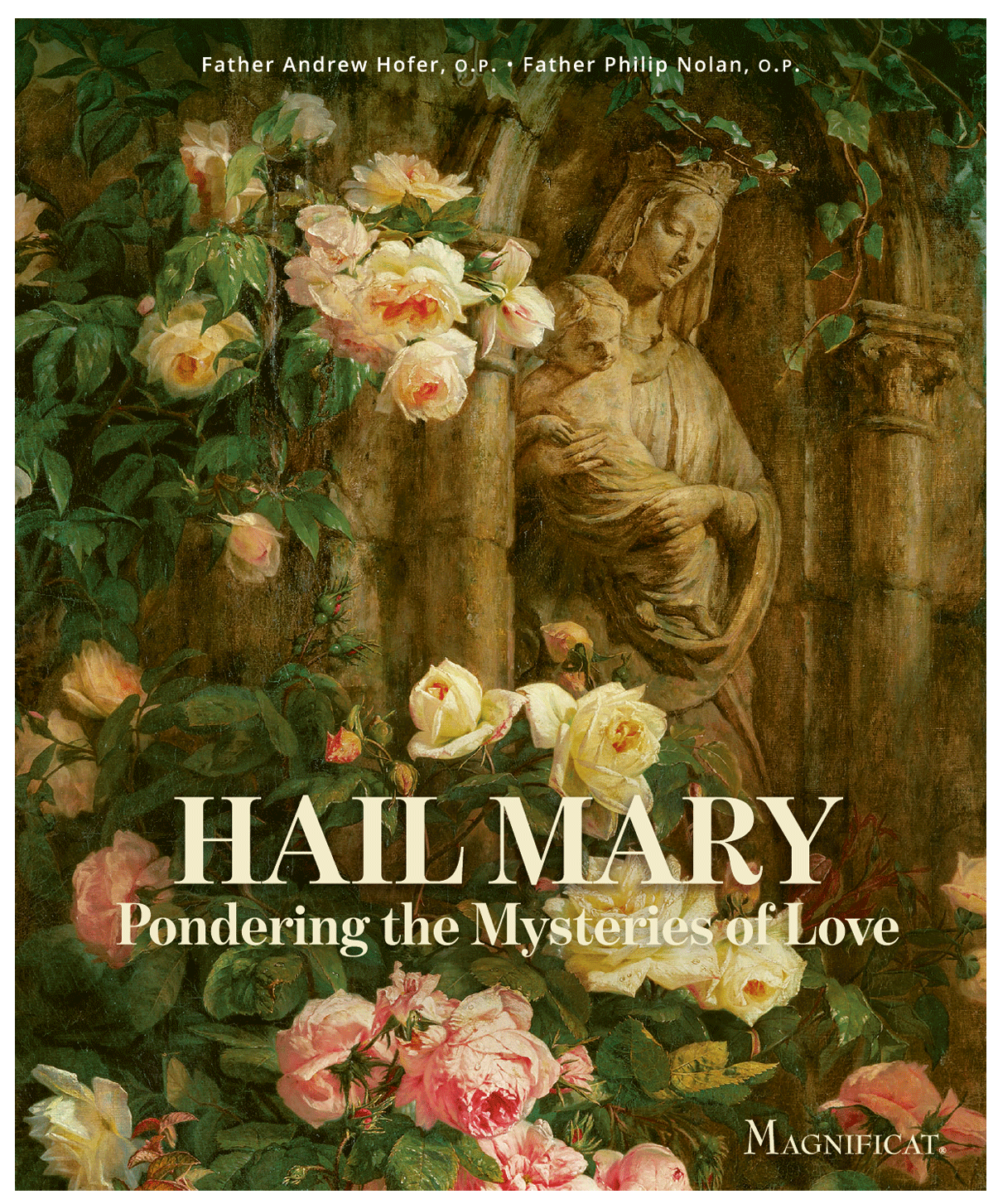The Assumption (c. 1629),
Philippe de Champaigne (1602–1674).
The Carmelite convent
This year we celebrate the 350th anniversary of the death of Philippe de Champaigne. He was already a famous painter when the church of the Carmelite convent in the Parisian suburb of Saint-Jacques commissioned him to paint a large altarpiece depicting the Assumption. A native of Brussels, the artist had settled in Paris eight years earlier. He was appointed painter of the queen in 1628, and through the sovereign’s good offices he came to work at the Carmel of the Incarnation, the first Parisian convent of the Discalced Carmelites. Two women played a decisive role in the establishment of this foundation, which was faithful to the Rule as reformed by Saint Teresa of Ávila: Catherine de Nevers and above all Barbe Acarie, who entered the Carmel with the name Marie of the Incarnation after her husband’s death in 1613.
The situation had a political side: The French cardinal and statesman (and relative of Acarie) Pierre de Bérulle intervened with Pope Clement VIII to persuade the General of the Carmelites to send some nuns from Spain. But it was necessary also to convince King Henry IV, who after the wars of religion feared that starting a Catholic foundation in Paris might be taken as a provocation.
In 1604, the first nuns—including two disciples of Saint Teresa of Ávila, Ana de Lobera Torres (Anne of Jesus) and Ana García Manzanas (Anne of Saint Bartholomew)—settled on the rue Saint-Jacques. The fruitfulness of this first foundation is dizzying: in sixty-three years, sixty-two Carmels were founded in France. The Carmel of the Incarnation quickly became one of the high places of French monastic life, attracting numerous vocations of young women, who often came from the nobility, including Louise de La Vallière, a former mistress of King Louis XIV—who took the name Louise of the Divine Mercy. Several great prelates, such as Jacques-Bénigne Bossuet, came to preach there. When it was closed during the French Revolution, the Carmel of the Incarnation suffered the sad fate of most convents or religious buildings. It was torn down in 1797, and its artworks—when they were not destroyed—were dispersed. The Assumption by Philippe de Champaigne, which had adorned the nave, fortunately escaped the revolutionary vandalism, as did other works by the artist: The Dream of Joseph, The Adoration of the Shepherds, The Adoration of the Magi (destroyed in 1870), The Presentation in the Temple, The Resurrection of Lazarus, and Pentecost.
Marian devotion during the reign
of Louis XIII
The extraordinary monastic flourishing of the Carmelites occurred within the context of a profound spiritual renewal noted for its figures of great sanctity and for a pronounced Marian devotion. On February 10, 1638, a few years after the completion of The Assumption, King Louis XIII consecrated the kingdom to the Blessed Virgin. This “vow of Louis XIII” was in reality the final step in a series of Marian devotions on the part of the royal family in the hope of giving an heir to the kingdom and to thank the Mother of God for having preserved France from foreign invasions. The document, signed by the king, placed France under the protection of Our Lady, “to whom we commend in particular our Person, our State, our crown, and all our subjects,” and instituted the August 15 processions for the feast of the Assumption. On September 5 of that same year, Louis Dieudonné [Louis the God-given] was born. Marian devotion, which had already been lively, then increased considerably in France, particularly on and around the feast of the Assumption.
The Assumption
Since the 7th century, based on patristic tradition, the liturgy has celebrated the fact that the Blessed Virgin was taken up to heaven at the end of her earthly life, though it was not until 1950 that the Church defined the tradition as a dogma in the Apostolic Constitution Munificentissimus Deus by Pius XII.
This subject was very dear to the Counter-Reformation, which wished to recall Mary’s place in salvation history, and Champaigne treated it numerous times: at least thirteen versions are known. In the one he painted for the Carmelite convent, the vertical composition—which recalls the Assumption that Peter Paul Rubens had executed for the church of the Carmelites in Brussels in 1616—allows the artist to develop the narrative on two planes: the terrestrial world, with the apostles surrounding the empty tomb, and the celestial world, with Mary carried up to heaven by the angels. The disciples’ agitation contrasts with the Virgin’s serenity. Champaigne gives each apostle his own attitude: surprise, fear, astonishment, or praise. The arrangement of the figures creates a diagonal, which starts from the lower left side and ends at the upper right side, putting Thomas at the center of the event. According to the apocryphal accounts he was absent at the moment the Blessed Virgin was taken up to heaven. Thus, faced with the empty tomb, he holds in his hands the evidence for what has just happened: the shroud and some flowers. The latter are the visible sign that what he doubted had in fact taken place.
In 1661, preaching to the Carmelites on the rue Saint-Jacques, Bossuet commented on this mystery of the Assumption: “Grant, O Blessed Virgin, that all who have celebrated your glorious Assumption might take this idea to heart profoundly: that there is no greatness that does not rely on humility; that humility alone causes triumphs and distributes crowns; and finally that there is nothing truer than this word from the Gospel, that ‘he who humbles himself during this life will be exalted forever in the eternal happiness’ to which the Father, the Son, and the Holy Spirit are leading us.”
Sophie Mouquin
Lecturer in art history at the University of Lille, France.
She is a frequent contributor to the French edition of Magnificat.
The Assumption (c. 1629), Philippe de Champaigne (1602–1674), Louvre Museum, Paris. © RMN-GP /Hervé Lewandowski.












Additional art commentaries